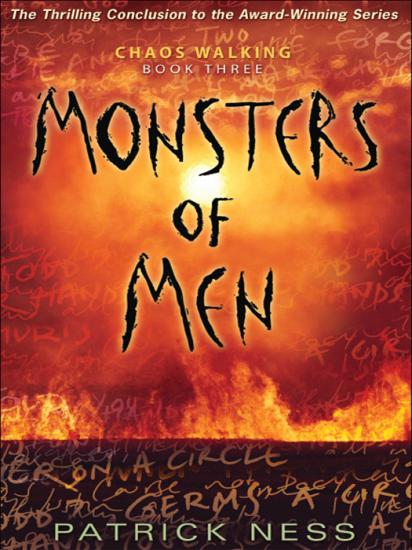
Summary:
Gr 9 Up–The first word of this conclusion to the
trilogy is "war," and war between various factions takes up
much of this book. The action begins immediately and is told
from two and then three viewpoints with no backstory that might
bring readers new to the series up to speed. Todd and Viola
attempt to persuade Mayor Prentiss and Mistress Coyle,
respectively, that peace is the better path to the future,
peace with one another and with the vast army of Spackles that
looms above the valley. Unfortunately, the Mayor and Mistress
only want peace that comes with victory for their faction. A
scout ship arrives from the approaching convoy of colonists,
changing the balance of power. The Mayor uses his "Noise," the
ability that male humans and all of the Spackle have to
communicate mentally, to control his army and to influence
Todd. Mistress Coyle and the other mistresses shelter under the
protection of the scout ship and work to cure the infection of
the bands that threaten the lives of many of the women,
including Viola. Ness distinguishes his various narrators by
the use of different fonts, further distinguishing Todd with a
select few words misspelled. This is a complex and engrossing
work that series fans will devour but which may be impenetrable
to those who haven't read the earlier volumes._Eric Norton,
McMillan Memorial Library, Wisconsin Rapids, WI_
Starred Review Ness, a forceful writer who chews
through ideas at a blistering clip, takes on war, the heftiest
of human follies, in the conclusion to his Chaos Walking
trilogy. The genocidal tyrant Mayor Prentiss leads an army on
one side, the terrorist healer Mistress Coyle heads a band of
revolutionaries on another, and a massive legion of native
Spackle threatens from a third. All three sides see only the
complete annihilation of the others as the sole option for
victory and survival, and they might be right, no matter how
Todd and Viola use their formidable wills to advance peace as
an influx of new colonists nears. It’s a thick book,
approaching Russian-novel territory, but it rarely feels
bloated; and readers invested in the story will likely concede
that Ness has earned the space. His rapid-fire litany of
impossible choices makes for captivating thought fodder, and
what has already been a potent display of the power of voice to
drive, amplify, and transform a story gets a third, unexpected
soloist. And in so doing he shows just how deep and complex, as
well as how versatile, a symbolic narrative device like Noise
can be. For all the huge themes mauling at each other, though,
it’s the characters that ultimately stand out in this
final act—the connections that bind them and change them
and ruin them and redeem them. This is science fiction at its
best, and is a singular fusion of brutality and idealism that
is, at last, perfectly human. Grades 9-12. --Ian Chipman
From School Library Journal
© Copyright 2010. Library Journals LLC, a wholly owned
subsidiary of Media Source, Inc. No redistribution
permitted.From